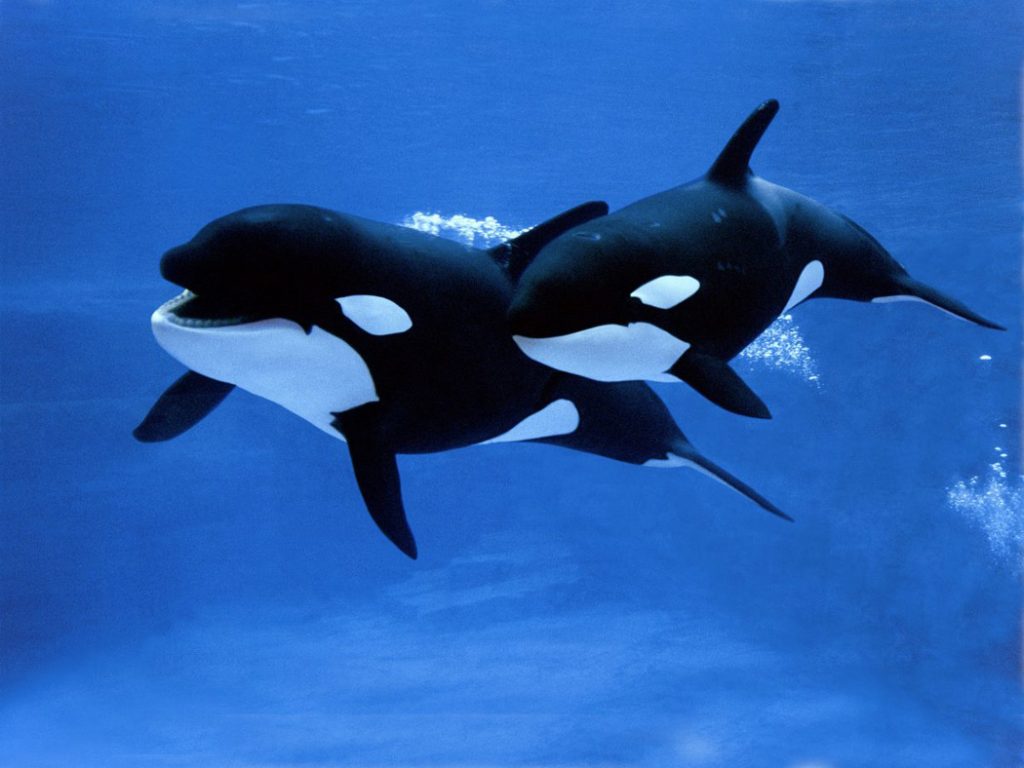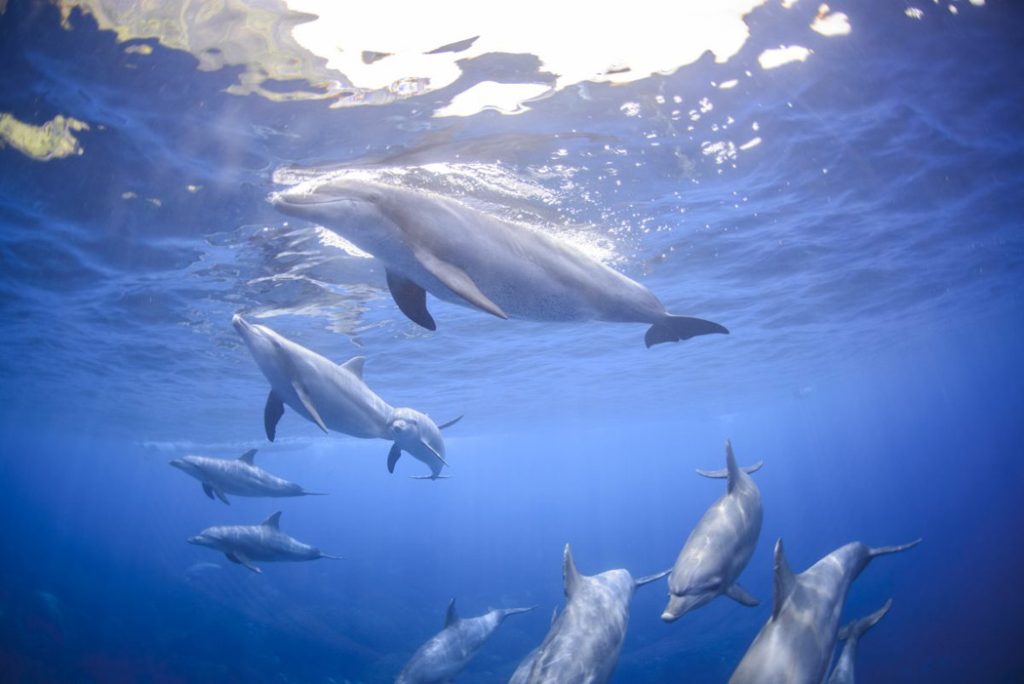
Dr. Marsha Green, founder of Ocean Mammal Institute, has gained international recognition for her groundbreaking studies on the impact of human behavior on humpback whales and spinner dolphins. She discovered that sonar causes whale brains to bleed, leading to impairment and death. She was successful in suing the Navy multiple times and secured a ban of the use of sonar in the waters between Hawaii and California during whale season. She also met with NATO and the European Parliament and secured a moratorium on the use of sonar pending environmental studies.
More recently, however, approval has been granted by the Internet of Underwater Things to create a worldwide underwater internet network that will involve sonar delivered by the 5G network, again endangering all marine life. The effect of underwater sonar on whales can be likened to standing next to a 747 jet engine. Its loud roar is deafening and damaging to whales, dolphins, and marine life and affects their ability to navigate.
“It has been observed that high-intensity sonar causes whales to hemorrhage, strand, and die,” says Dr. Green. “Beaked whales have been known to panic and rush too quickly to the water’s surface in response to sonar, causing them to get the bends and perish.”

Bombarding ocean creatures with man-made frequencies has a devastating effect. “The ocean is a world of sound,” says actor Pierce Brosnan. “Whales, dolphins, and marine mammals use sound to locate each other over great distances. Human technology is drastically changing this environment, damaging the delicate web of life, threatening the ability of whales and other marine animals ability to function and ultimately survive.”
The nonprofit Ocean Mammal Institute invites you to a free Zoom event on Tuesday, December 21, to hear about what they’re doing to stop this threat to whales and other ocean life. “Say YES to Protecting Whales and Marine Life from the new Smart Ocean” begins at 5 p.m. PST.
Christine Albers interviewed Dr. Marsha Green recently about her passion for working with whales.

CHRISTINE ALBERS: What attracted you to the study of whales?
DR. MARSHA GREEN: The culture of whales is very similar to that of humans. They are extremely intelligent and teach their offspring ancestral traditions and the skills to survive. They love, they play, and they mourn losses, just like us. The pod they belong in is like an extension of their own self, so they share food, protect each other, and communicate in their own dialect, singing their own whale song.
When I was in Hawaii, I could hear the humpbacks singing, and their songs were mesmerizing. When they sing, they float upside down, motionless. Their songs are powerful and can be 20 to 40 minutes long, and heard up to 20 miles away. Males will all sing the same song the same way, over and over again, but the following year, they return with a new composition.
I sometimes wonder if pointing towards the center of the earth while singing is how they learn new songs and connect with other whales worldwide and form life-long relationships. This would make a good study someday.
How did you study the whales?
In 1986, I started taking groups of student interns to the island of Maui to study the whales. Hawaii in winter is the biggest tourist area in the world, and parasail boats are extremely popular. However, they weren’t being careful and they were driving their boats into the habitat of endangered whales and forcing the whales off shore. Their physical presence and the noise from the boats was disturbing to the mother whales and their newborn calves, who had to stay in water close to the shore. The calves are the hope for the future of whales and they need to be protected.
How did the students research the effects of the boats on the whales?
I wanted to show my students that you can use science to protect nature. The students perched atop volcanic rock cliffs overlooking the Pacific Ocean, using binoculars and other scientific instruments to observe pods of whales. They recorded the proximity of boats and the effects of engine noise on the behavior and movements of the whale pods.
Many people believe that whales are such huge animals that they aren’t sensitive to a little noise in their environment. How does noise from boats affect them?
People need to understand that whales are acoustic animals and their auditory sense serves as their eyes and ears, helping them navigate, avoid predators and find food. Noise from a boat can cause serious harm and force whales to stay underwater longer to evade the sounds. This places undue stress on the whales, particularly calves, who do not have fully-developed lung capacity and need to swim in shallower waters.
Were the students able to prove that the boat noise significantly disturbed the whales?
In 1991, using the data collected by my students, we testified about the dangers that parasail boats posed to humpbacks at the Hawaii legislature. After several failed attempts, the Hawaii legislature passed a ban on the watercraft from mid-December through mid-May annually, during the time when whales are breeding and calving in the area. The ban has continued for 30 years, and today I am still an advocate for endangered humpback whales and all marine life, who remain vulnerable to the behavior of humans.
How did you know sonar was harming whales?
For six years I was the only person saying that sonar was killing the whales and we must protect them as they are vital for our environment. The government didn’t believe me; they thought I was crazy. But we proved the harm they were doing while the Navy was testing sonar in the Bahamas. The whales were stranded while the Navy ships were there. Some Harvard researchers went to the Bahamas to perform necropsies on the beached whales and found that they had bleeding in their eyes, brains and lungs. It was clear that the sonar testing caused that bleeding. As a result, we got the Navy to stop doing exercises for five years between Hawaii and California.
What are your present concerns?
The five-year moratorium on testing sonar between Hawaii and California is up and the Navy has resumed sonar testing and training activities off the Hawaiian and Californian coasts. The agencies admit that this current sonar testing will cause nearly 9.6 million instances of harm to whales, dolphins, and other marine mammals.
What is worse is that the Navy plans to combine 5G with sonar. They call it the “Smart Ocean.”
What would be the ramifications of such actions?
It is hard to imagine how widespread the damage would be for the ocean mammals. I spoke recently with an Environmental Electromotive Force (EMF) expert who literally said, “This will be the end of the ocean.” If the ocean dies, we die, as most of our oxygen comes from the ocean.
What is your vision of how you can change this outcome?
I believe that truth inevitably triumphs. We hope we can wake up the population as well as the proponents of this project about the consequences of 5G and sonar in the underwater kingdoms. In addition, we aim to educate the public about our marine life and how we benefit from their contribution to a healthy planet.
What would you want the public to know about whales and their contribution to our environment?
Whales are essential for our environment because they sequester much more carbon dioxide than trees. I was amazed to find this 2019 report in the magazine of the International Monetary Fund (IMF), which stated that “each great whale sequesters 33 tons of CO2 on average,” (in contrast to forest trees, which absorb no more than 48 pounds of carbon dioxide in one year.) They pointed out that when the whales die of natural causes, “their bodies, which are gigantic and have captured carbon during their lives, fall to the bottom of the sea, keeping carbon dioxide on the ocean floor, which takes the carbon out of the atmosphere for centuries.”
The article also says that “Rebuilding populations of large baleen whales who store carbon in their bodies is equivalent to the amount stored in 272,000 acres of forest, an area the size of the Rocky Mountain National Park, in Colorado.”
The IMF magazine report calculates that if the 1.3 million or so whales alive today can rebound to their prewhaling numbers of 4 million to 5 million, “it could significantly increase the amount of phytoplankton in the oceans.” Even if phytoplankton productivity increased by just 1 percent, it “would capture hundreds of millions of tons of additional CO2 a year, equivalent to the sudden appearance of two billion mature trees.”
According to marine biologist Rodrigo Hucke-Gaete, a professor at the Austral University of Chile and president of the Chilean NGO Blue Whale Center, “We have to minimize every threat affecting whales (and marine ecosystems as a whole) arising from human activities through decisive and concerted actions.” Because of their ability to capture and store atmospheric carbon, as well as the many other ways they help stabilize marine ecosystems, he said, “Every whale counts, and we should take care of them as if they were the golden goose.”
It is amazing to me that the International Monetary Fund sees the value in protecting the whales. It’s a ray of hope for the future.
You are so passionate about saving marine life, and yet you are just one person. How can you accomplish it all?
We can’t live without healthy oceans. And our oceans are in crisis from overfishing, chemical pollution, noise pollution and global warming. I believe in the power of grassroots movements. Small groups of people can accomplish a lot. I want people to realize it’s important to care enough about something and know that you can make a change. If you’re fully passionate about what you’re doing, the universe will support your success.
